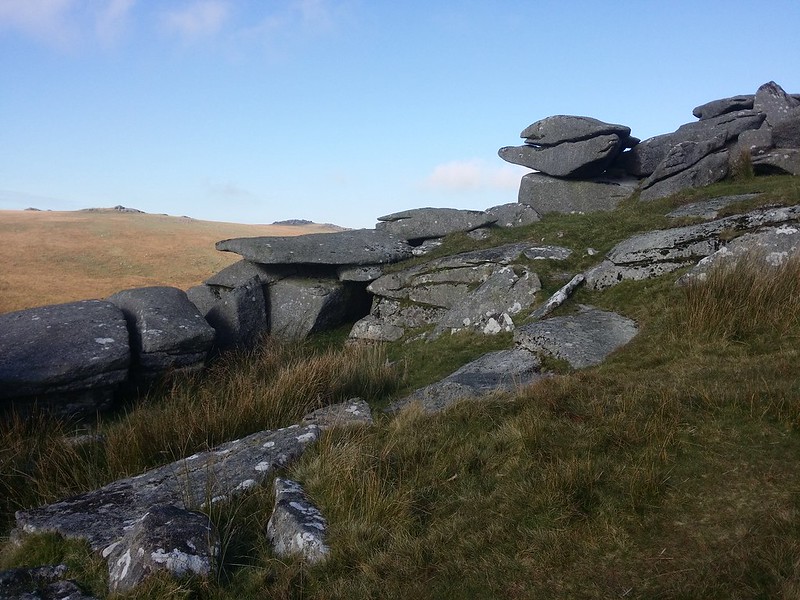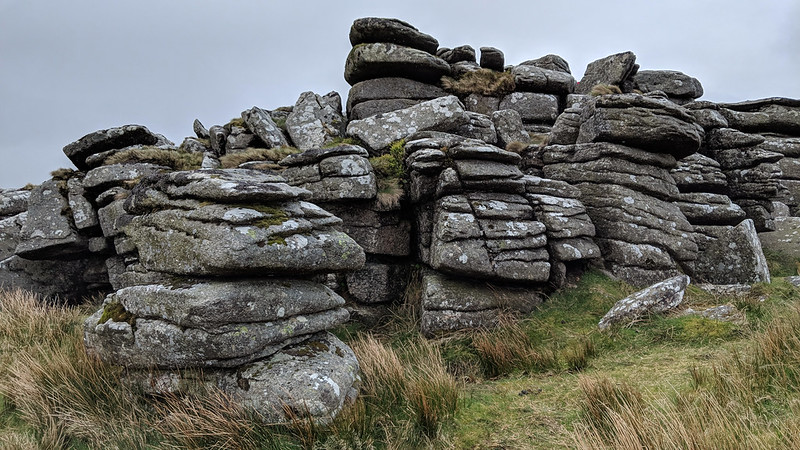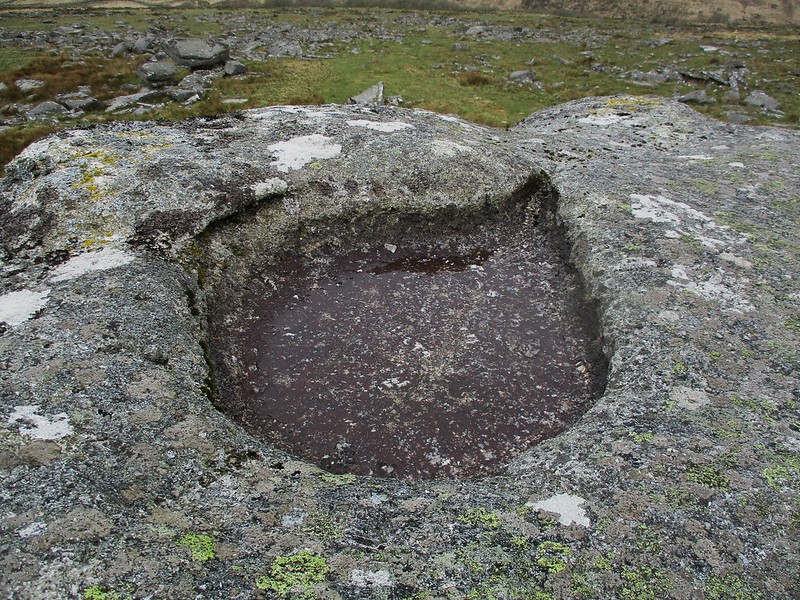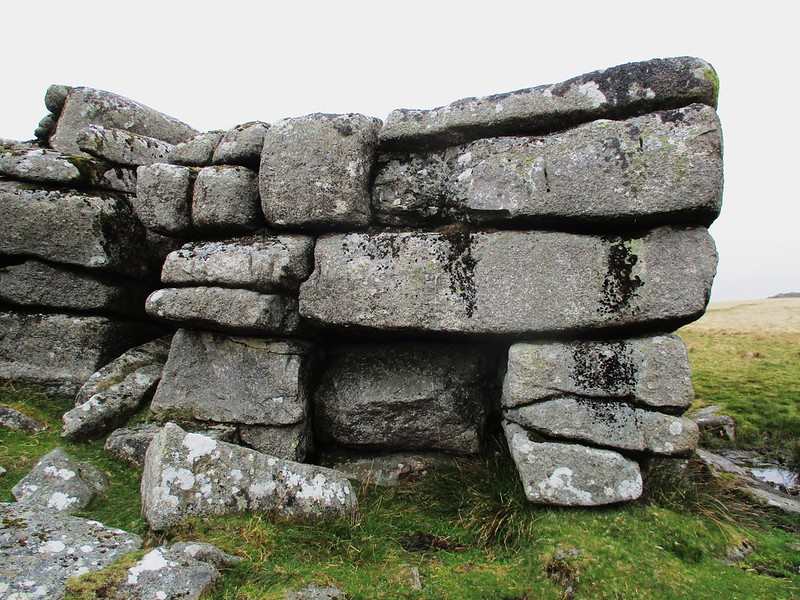TORS OF DARTMOOR
a database of both lesser- & well-known rocks and outcrops
Littaford TorsLittaford Tor, Longbetor, Long Be Tor, Lidaford Tor, Little Ford Tor
 The impressive ridgeline that begins at Crockern Tor and stretches for over two miles northward is abundant with strewn granite and hilltop tors that command the skyline. Ascending the ridge on the well-defined track from Crockern Farm, the Littaford Tors are the first tors you reach, consisting of two main groups (hence the plural name). The lowest and southernmost is generally known as Little Bee Tor that has its own entry elsewhere. This rockpile has several small, rounded rock basins on its surface that are well worth a look as you progress along the path.  The larger of the two collections, at SX 61576 77151, is more impressive and a sprawling mass of granite that culminates in some fantastic shapes as you perambulate it. The eastern side resembles a huge wall with neatly stacked rocks resembling Lego bricks. In strong winds, this impressive formation may provide shelter from a strong westerly wind. The western side that overlooks the West Dart, on the other hand, has a strange rock poised as such to create a window.  There is a splendid lesser-known rock basin on the summit that despite its size is unmarked on Ordnance Survey Maps. A few respected commentators in the past have made mention to it, the earliest it would seem being Mr Edward Bray in his journal of 1802 that is quoted in Mrs AE Bray's book some 42 years later: "We then proceeded along this ridge to Little Longaford, or Longford Tor. This, in Greenwood's map, which is defective enough in regard to names, is thus distinguished from a larger one; whilst the tors that follow Crockerntor in succession are there called Littlebee tor, Long tor, Higher-white tor, and Lower-white tor. White tor, or Whitentor, as my tenant pronounced it, we did not visit; and as I have some doubts about the real names of the tors, I shall only say that the first (a small one) that we approached had something in its appearance which so much reminded me of Pewtor, that I asked the guide if there were any basins in it: at first he replied in the negative, but afterwards said he thought he had once observed a basin on one of these tors. This Avas enough to ensure a search, and we were not long in finding one. It was in the shape of a rude oval, terminating in a point or lip, about twenty inches long, eighteen wide, and six deep." A subsequent mention of the basin is afforded by John Lloyd Warden Page in 1895, however, the most recent reference is in Dartmoor Magazine, in an article by Max Piper and Tim Jenkinson (2020) that is entitled 'Lesser-known Rock Basins', where a photograph is supplied alongside the NGR of SX 6157 7715.  The views from the Littaford Tors are sensational, far-reaching and memorable. Embracing the heart of the central basin as well as into the inner North Moor, the visitor is rewarded with views north and west of the prominent Longaford, Crow and Beardown Tors that somewhat enclose the valley, with Wistman's Wood nestled beneath the heaps of granite clitter. Southward, the basin opens up and the rolling hinterlands of the South Moor rise to great elevation above the West Dart River, whilst to the east Bellever Tor overshadows the forest of the same name with the crags of Hay (Hey), Saddle and Rippon visible in the distance behind it, alongside the broad hills of Hameldown and Assycombe to the left of this.
| ||||||||||||||||||||||||||||